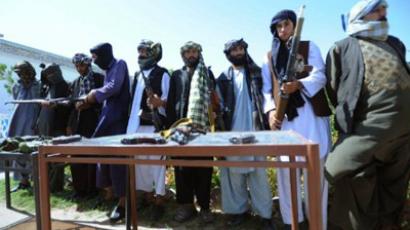US officials admit 'incorrectly entered' data on Taliban attack downturn in 2012

The US military and its coalition in Afghanistan have acknowledged a miscount of Taliban attacks in the country last year, citing a clerical error as the likely reason for the false data - which Washington has already used.
In January, the International Security Assistance Force (ISAF) in Afghanistan boasted a roughly seven per cent drop in attacks by Taliban forces in Afghanistan in 2012, but as the Associated Press has learned, the level of “enemy-initiated attacks” actually remained the same.
“During a quality control check, ISAF recently became aware that some data was incorrectly entered into the database that is used for tracking security-related incidents across Afghanistan,” ISAF spokesman Jamie Graybeal said Tuesday. Graybeal attributed the flaw to a clerical error, adding that it does not change the overall assessment of the situation in Afghanistan.
The seven per cent figure was used in a monthly trends report posted on the ISAF website on January 22 as part of its monthly update on security and violence. It has now been removed.
But the Department of Defense, which relied on the flawed statistic, says that “in spite of the stated adjustment, our assessment of the fundamentals of progress in Afghanistan remains positive,” according to chief Pentagon spokesman George Little, who added that “the fact that 80 per cent of the violence has been taking place in areas where less than 20 per cent of the population lives remains unchanged.”
“This particular set of metrics doesn't tell the full story of progress against the Taliban, of course, but it's unhelpful to have inaccurate information in our systems,” Little added, promising to adjust the figures.
The AP also asserts that the faulty figure was used in its semi-annual report to Congress on security progress in Afghanistan. That report was sent to Congress in December.
It might be those figures, the agency asserts, that prompted the Defense Secretary Leon Panetta to say in mid-December that "violence is down" for 2012 and Afghan forces "have gotten much better at providing security," adding that the Taliban will continue its agenda - "but overall they are losing."
A reduced threat from Taliban forces and the ability of the
local Afghan forces to take over has been cited as one of the main
reasons for withdrawing American combat troops from the country in
December 2014.














